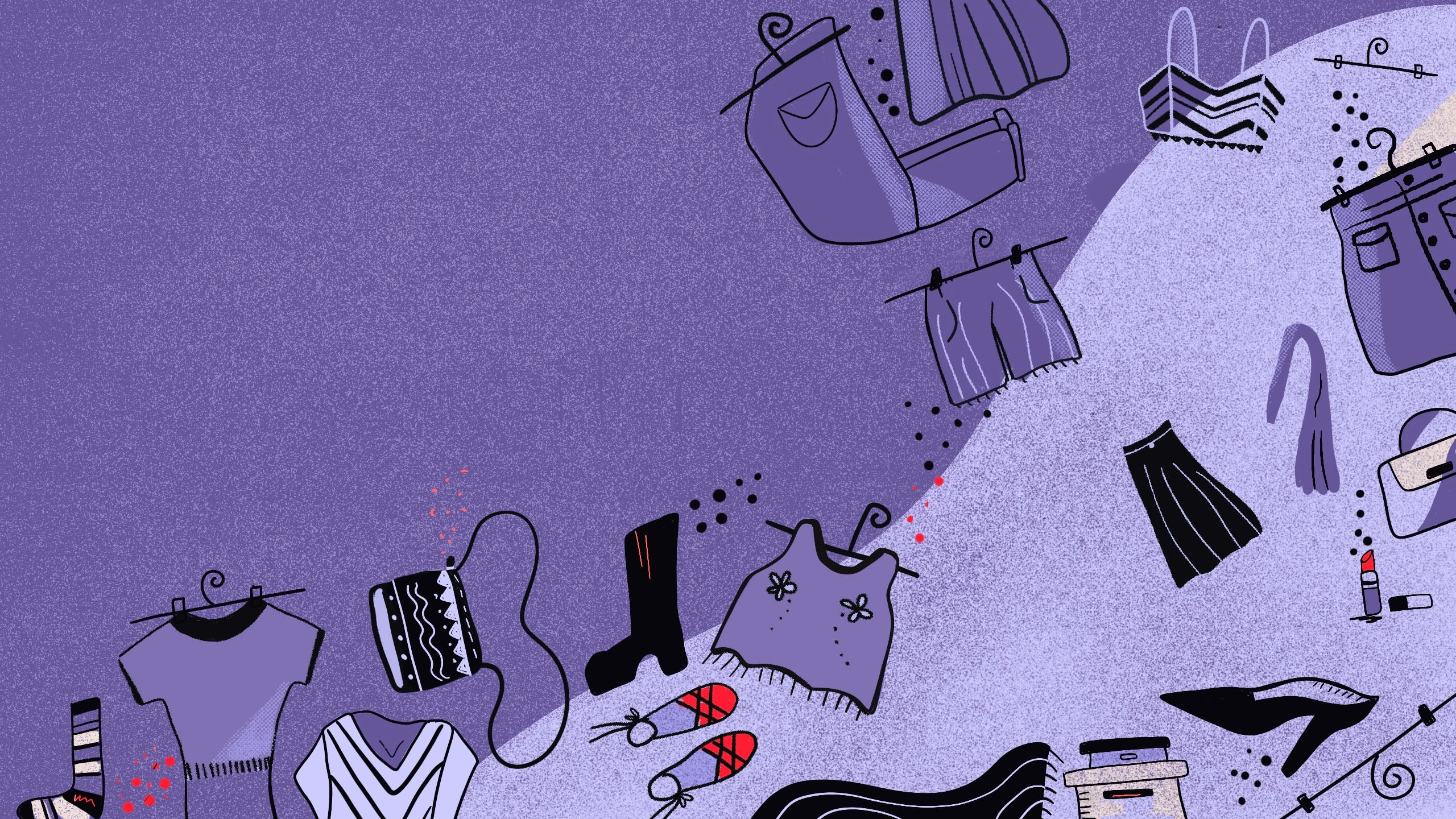WHAT WERE YOU WEARING?
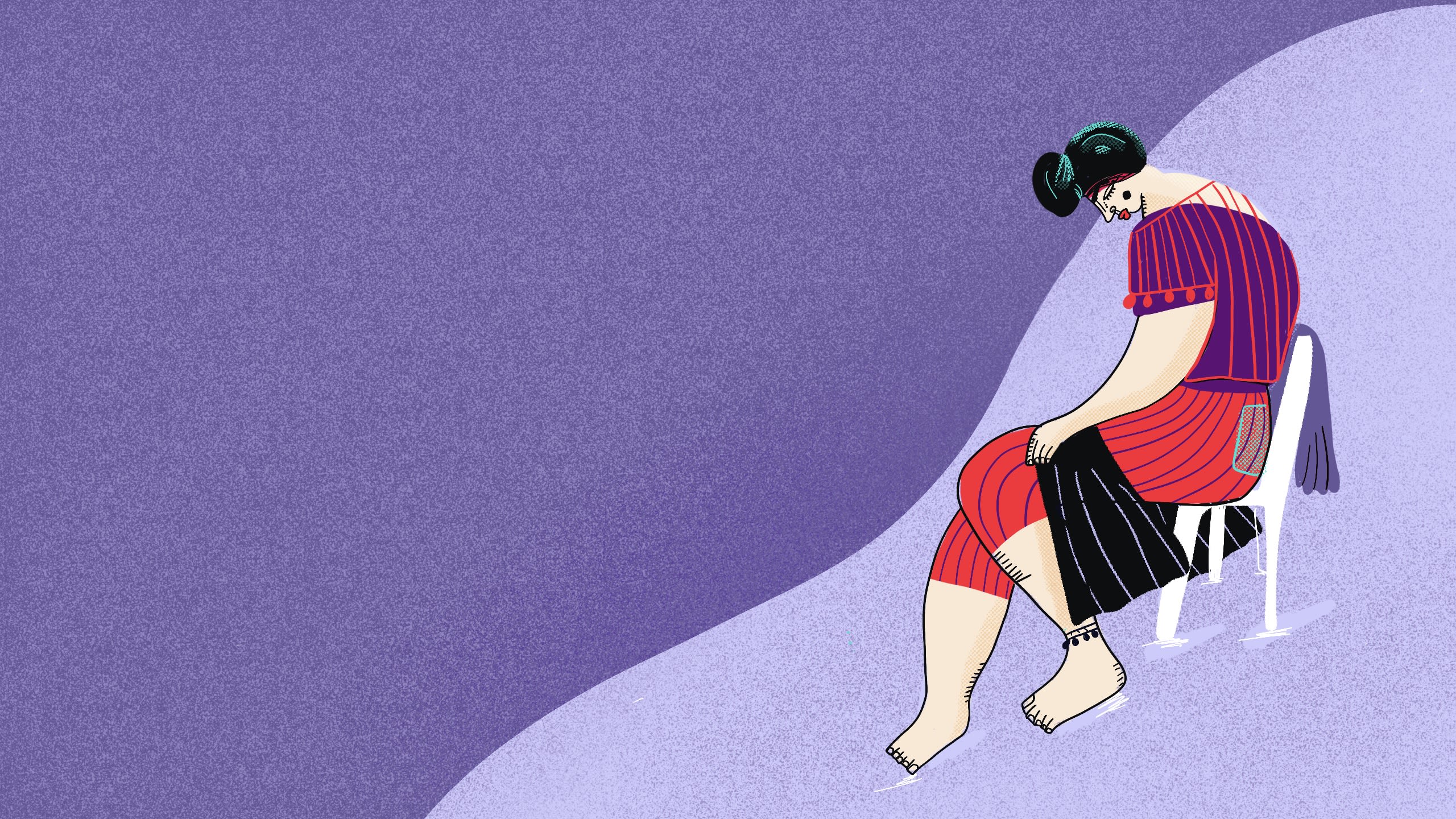
Women’s bodies, and women’s choices, are not their own, and what they wear is not seen as their choice, agency or personal right. If women do decide to break these norms of what is considered decent or modest, their safety, opportunities and security are at stake.
Discrimination and misogyny are rampant in the streets, homes, workplaces, and institutions across the MENA region when women dress, or undress, as they choose. This insidious gender-based violence ranges from micro-aggressions to vile acts of abuse, and it is inflicted on women so frequently it has become routine.
In the MENA region what women wear dictates who is deserving of safety, and who is not, who is deserving of sympathy, and who is not, who can access work and educational opportunities, and who cannot. In MENA when women make the daily decision to what to put on their own bodies, the private becomes public. Their choices are policed and enforced within their own families and wider communities, and have huge economic, social and mental health repercussions on their lives. A woman’s ability to navigate public spaces freely is tied to her morality, and that morality- no matter cultural, religious, class, ethnic or political backgrounds- is determined by what she is wearing.
For Nadia, control of her body and choices started at an early age. Like so many girls in the MENA region, others around her make decisions about what is an “appropriate” way for her to dress. If Nadia conforms, she is accepted by her community. If she does not, she’ll be met with stigma, ostracism, and violence.
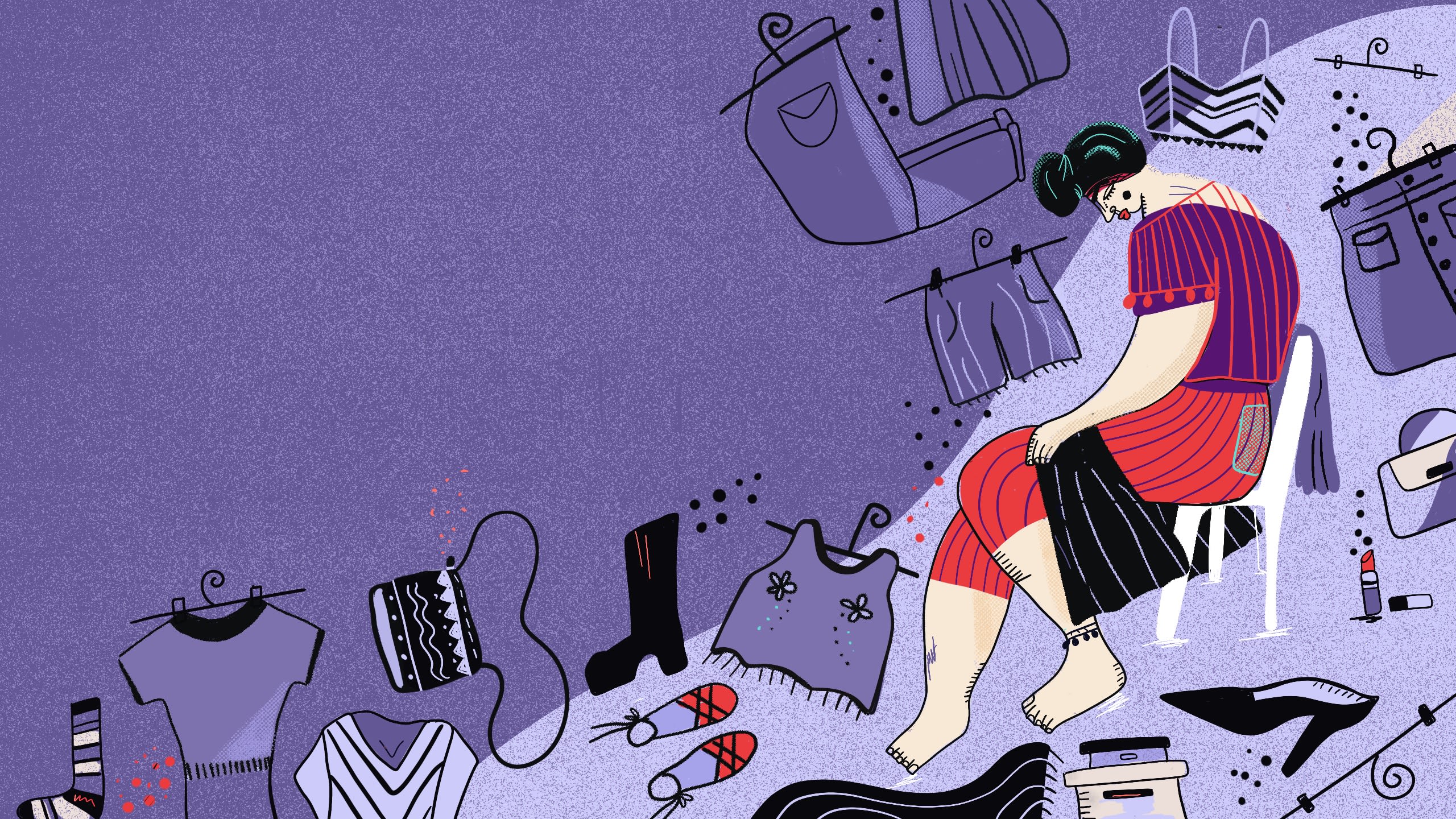
''MY BODY IS NO LONGER MY OWN''
Every Wednesday morning, Nadia plays sports at school. But this time, she is the only one in the class not wearing sports clothes.
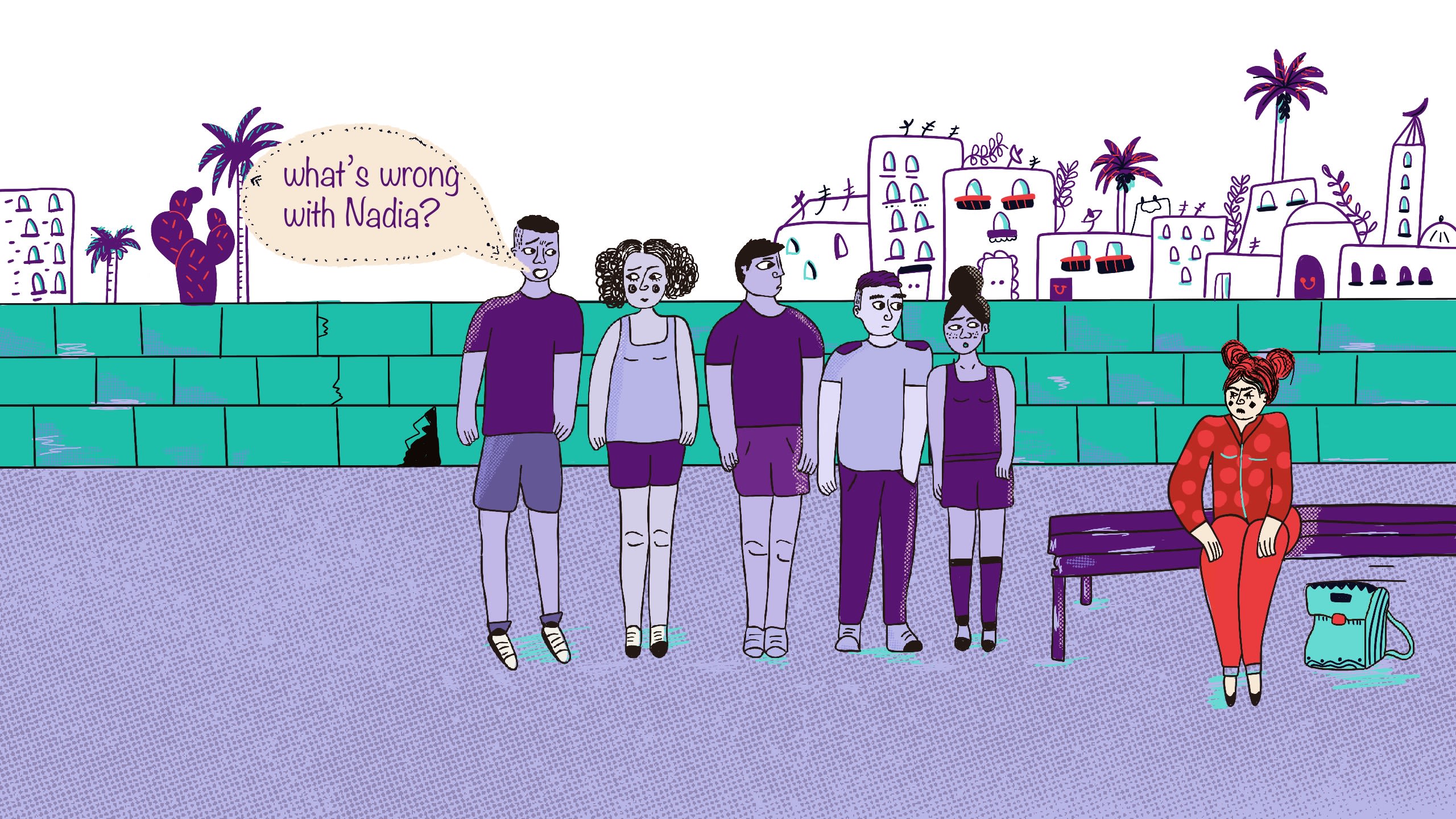
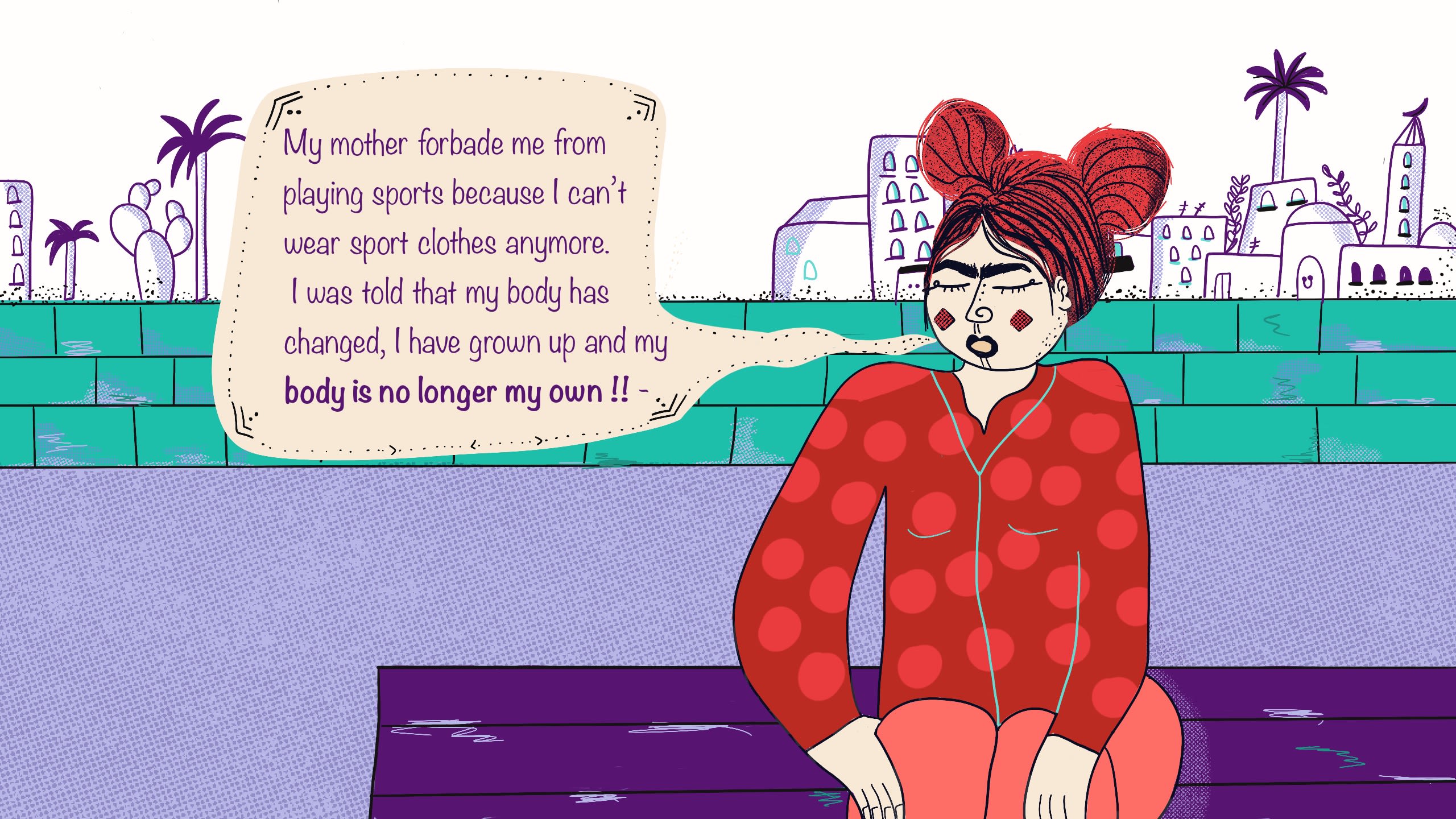
The coach isn’t surprised. Nadia isn't the first girl prevented from playing sports as she gets older, and she won't be the last. She calls it being "dress coded".
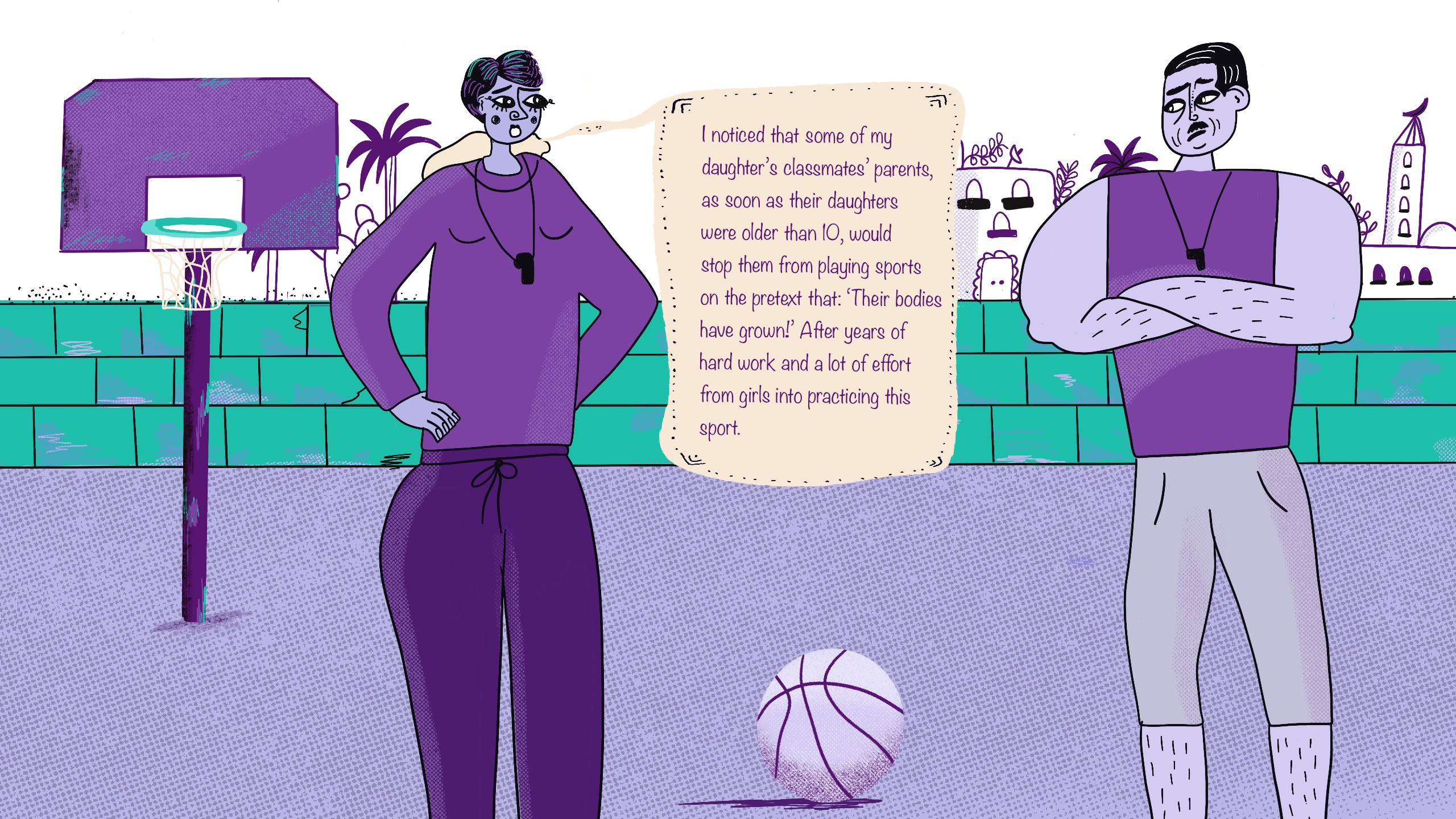
“SURVIVING PATRIARCHY”
To avoid daily harassment on the bus on the way to work, Nadia takes her long black cardigan from her handbag and puts it on.
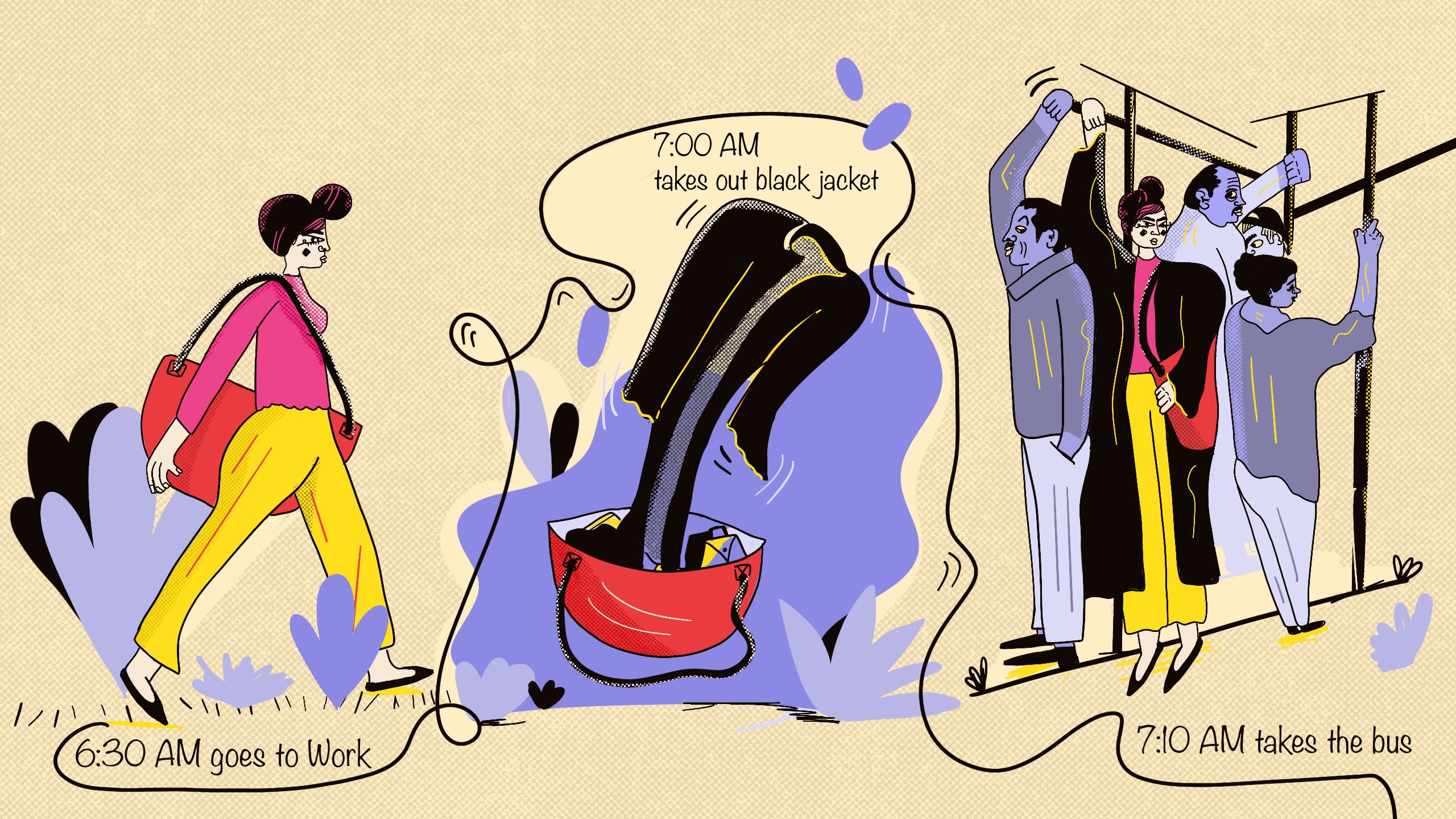
At lunchtime, she leaves the office and switches to her beautiful shirt to go eat with her friends.
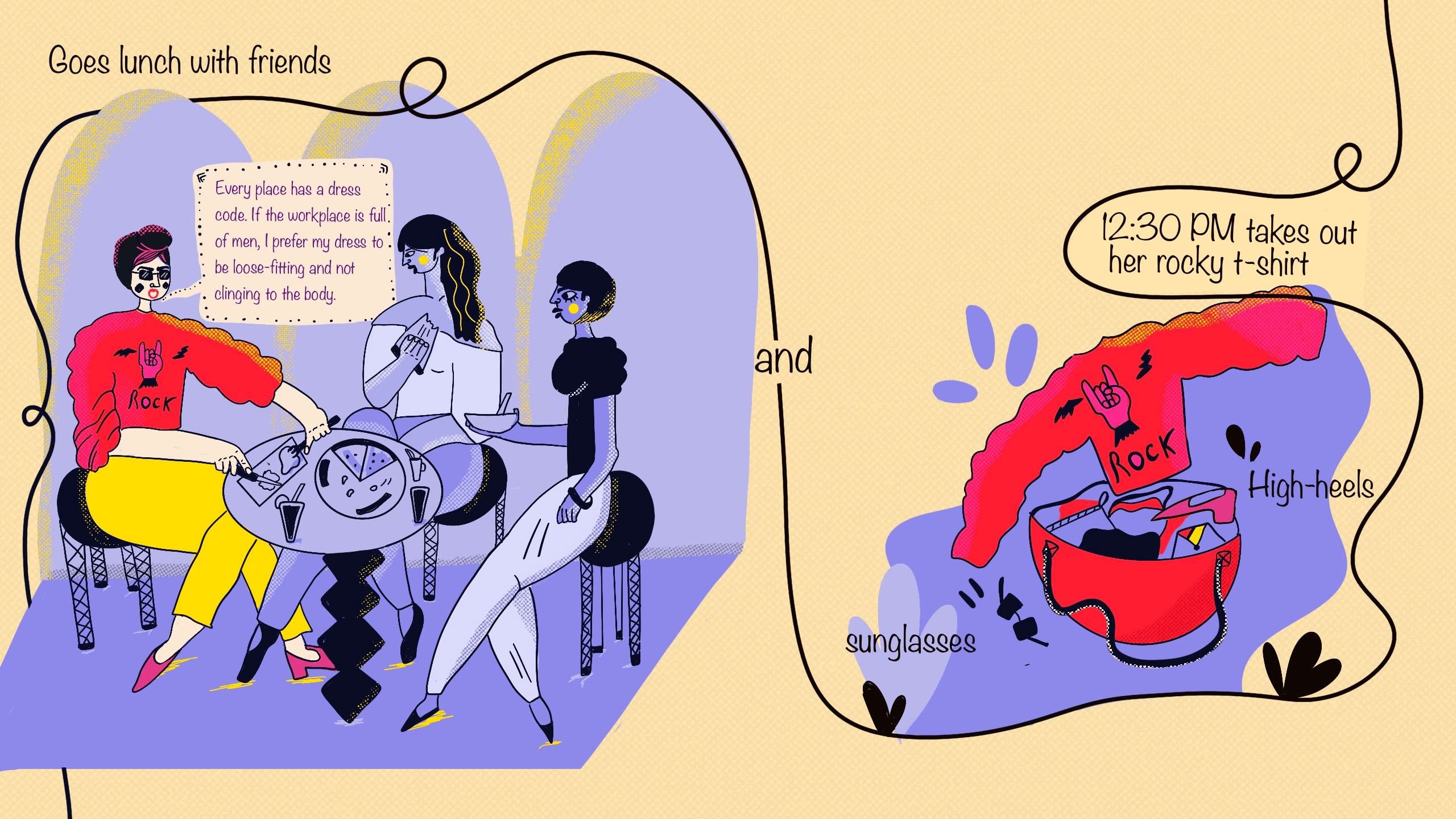
At the end of the day, Nadia takes off her lipstick, switches to her basic white t-shirt, and puts on her flat shoes for the journey home.
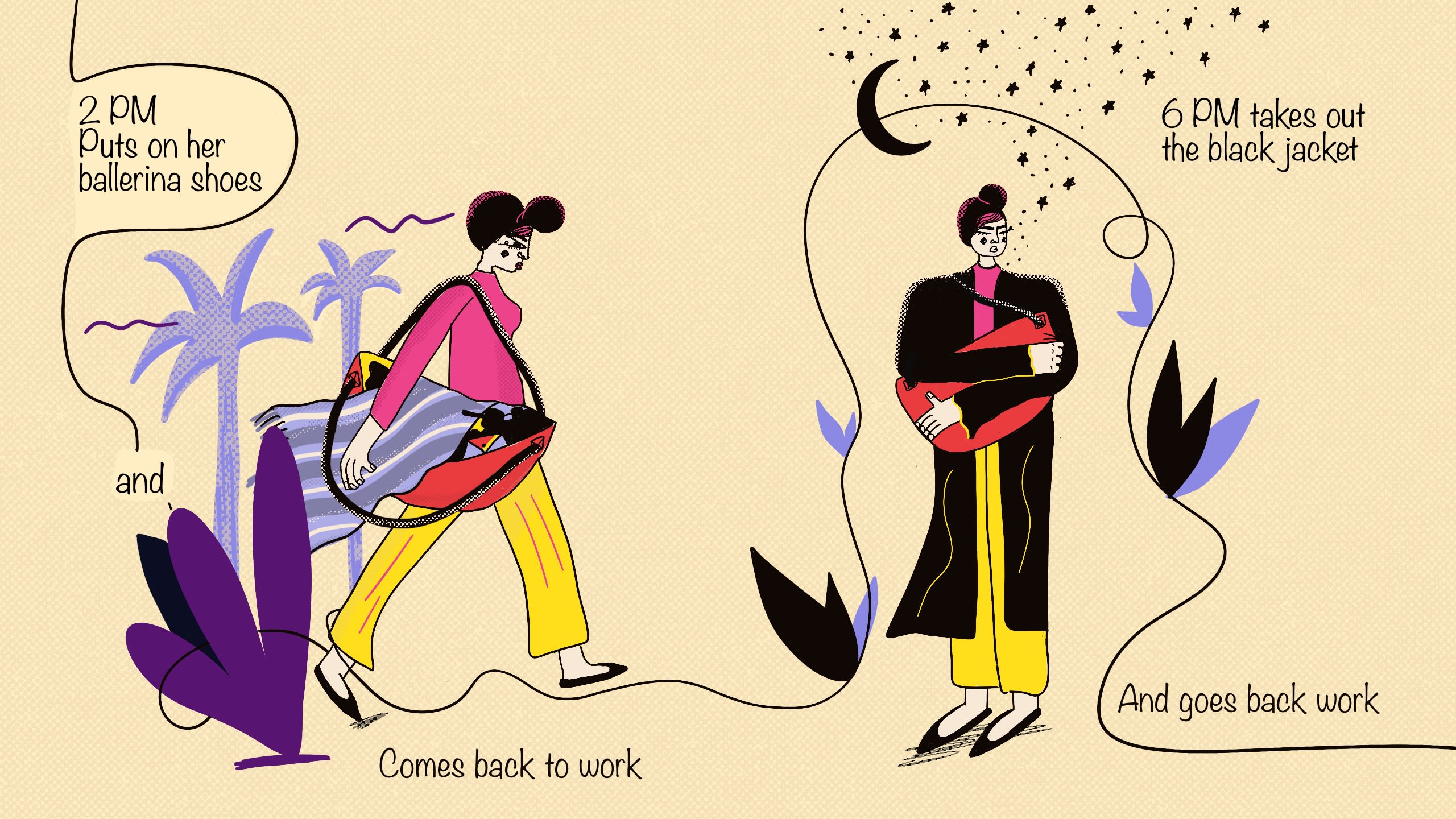
THEY SAY ''DRESS MODESTLY TO STAY SAFE. YET, I DON’T FEEL SAFE''
After an evening out with her girlfriends. Nadia drives her car home. On the way back she gets pulled over by a policeman for an ID check. Everything is in order, but the policeman won't leave her alone.

His inappropriate questions enrage her, and she slaps him.
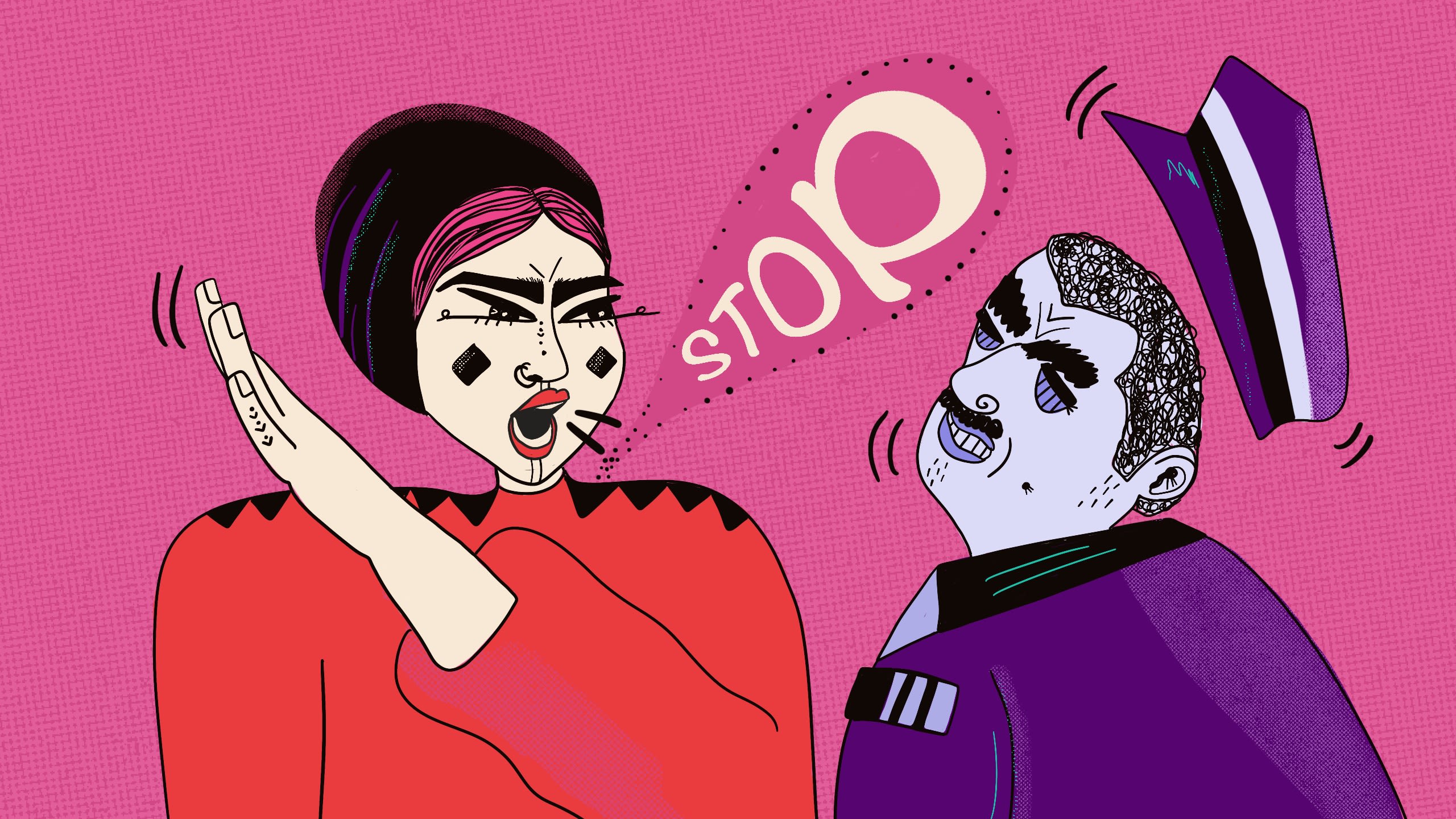
Nadia ends up at the police station for assaulting a police officer. They call her husband Yousef and ask him to pick her up. Nadia is terrified about what his reaction might be. Her husband and his mother arrive at the station in a rage. Her mother-in-law tells her that her dress is provoking.
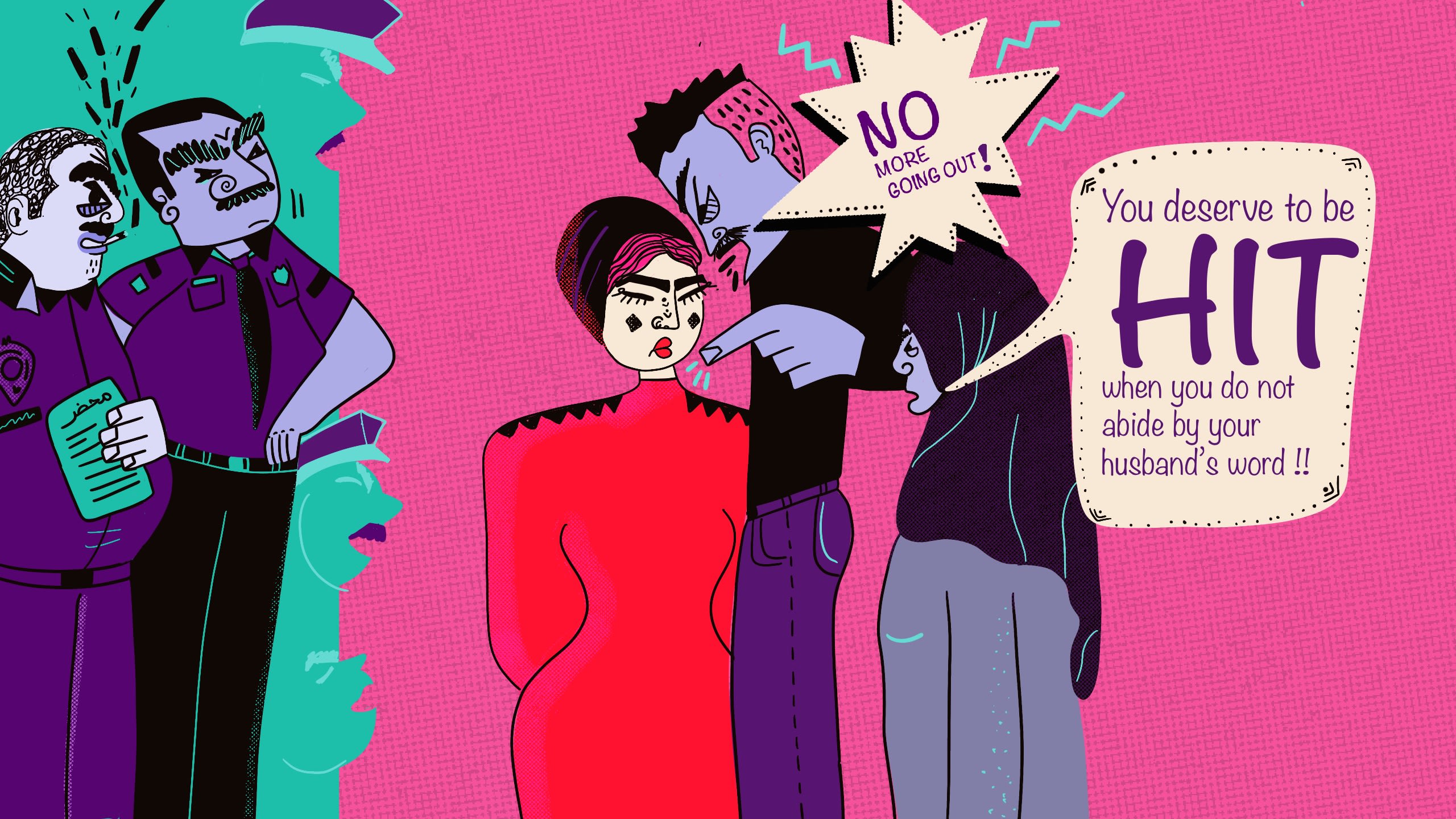
Only women themselves have the right to decide what they wear. When societies police how women dress they are denying them undeniable freedom. There must be change. Small and large acts of defiance can be dangerous, but power structures must change so women can express themselves without fear.
You can read more here in the Oxfam report The Tyranny of Dress Codes
Illustration by Sonia Ben Salem/Atelier Glibett
